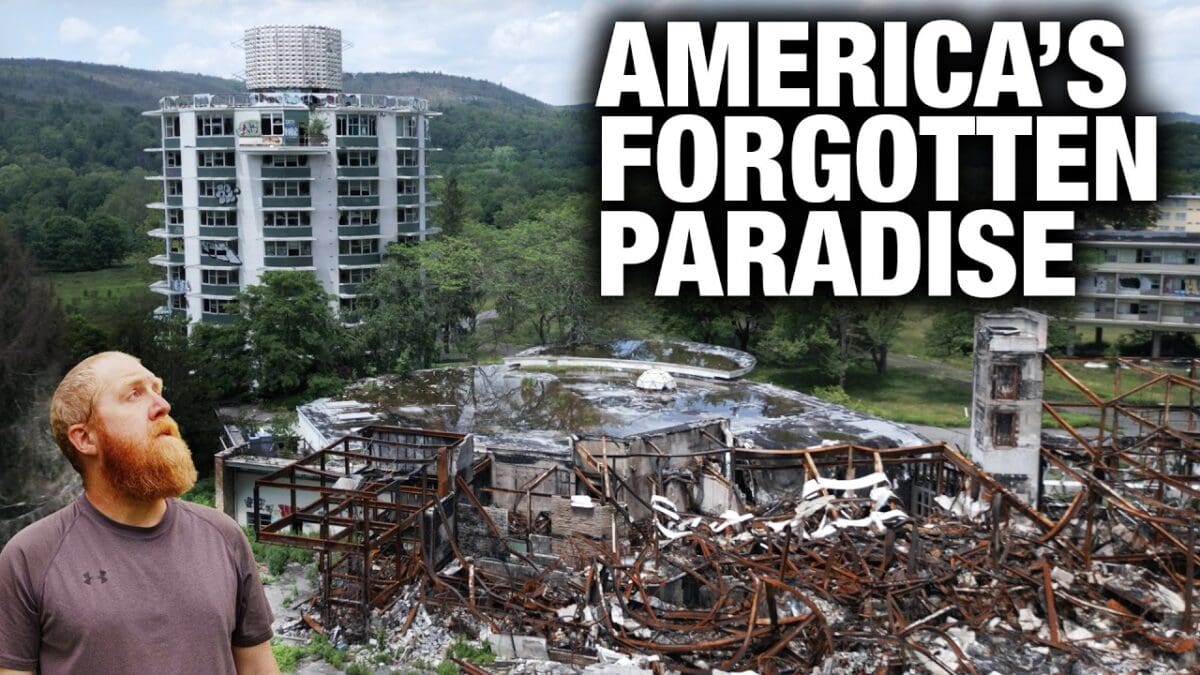Have you ever wandered through crumbling ruins and wondered about the vibrant lives they once held? Hidden in New York’s Catskill Mountains are the remnants of a bygone era—a summer haven that drew millions, from everyday families to A-list celebrities. This is the story of the Borscht Belt, a slice of Americana immortalized in films like Dirty Dancing, but often overlooked today. In a captivating YouTube video by Erik K Swanson, he dives into this forgotten world, uncovering its immigrant roots, golden age, and heartbreaking decline. If you’re a history buff, nostalgia seeker, or just love tales of lost grandeur, keep reading—and don’t miss the video embedded below.
The Immigrant Roots: A Sanctuary for Outsiders
The Borscht Belt’s story begins in the early 20th century, when Jewish farmers in the Catskills started renting out rooms in boarding houses. For New York City’s Jewish immigrants, it was more than a vacation spot—it was an escape from sweltering urban heat and discriminatory policies that barred them from mainstream resorts and country clubs in the Borscht Belt area.
Named after the beet soup popular in Eastern European Jewish cuisine, the Borscht Belt evolved from simple cabins into a cultural hub. It symbolized resilience, providing a taste of the American Dream for working-class families fleeing prejudice at the turn of the 19th to 20th centuries.
The Golden Age: Paradise for Families and Kings
By the 1940s and 1950s, the Borscht Belt had evolved into sprawling resorts. Over 500 hotels and 1,500 bungalow colonies dotted the landscape, hosting nearly a million guests each summer. These weren’t basic getaways—they were all-inclusive paradises tailored for families in the heart of the Borscht Belt.
Peter, who spent 70 of his 72 years in the area, paints a vivid picture: “Every man was a king, every woman was a queen.” Wives and kids stayed all summer, while dads commuted from the city on weekends. Activities abounded—baseball, horseback riding, hayrides, and even rolling down hills in cardboard boxes.
Post-World War II, resorts modernized into country club-style havens with air conditioning, indoor pools, and even private airstrips. Massive dining rooms seated thousands, and fashion parades by the pool added glamour. For middle-class Jewish Americans, saving year-round for these eight weeks was worth it—it was pure bliss.
Celebrities and Entertainment: The Pre-Vegas Glitter
Before Las Vegas stole the spotlight, the Borscht Belt was the place for stars. Heavyweight champs like Rocky Marciano trained there, praising spots like Grossinger’s for making “training a pleasure.” On Saturday nights at the Concord, you might spot Lucille Ball, Gary Morton, or the Rat Pack.
The real draw? Legendary entertainment. Nightclubs and stages hosted proving grounds for comedians, musicians, and performers. Rock ‘n’ roll, comedy acts, and variety shows filled the air. As the video highlights, it was a launchpad for artists who later became household names, turning summer nights in the Borscht Belt into unforgettable spectacles.
The Decline: A Perfect Storm of Change
The mid-1960s marked the beginning of the end. Societal shifts hit hard: cheaper airfare opened up Europe, cruises, and exotic destinations like Puerto Rico or Las Vegas. The next generation rebelled against tradition, preferring jet-set adventures over mountain air.
Financial strains compounded the issue. Resorts expanded with golf courses, modern buildings, and indoor pools to compete, but “keeping up with the Grossinger’s” bankrupted smaller ones. Broader changes—like reduced antisemitism allowing Jews access to mainstream spots, credit cards enabling flexible travel, and evolving attitudes—created a “perfect storm” for the decline of the Borscht Belt.
One by one, icons like Young’s Gap, Grossinger’s, and the Concord closed. By the 1980s, the music faded, leaving empty stages and moss-covered floors.
Wandering the Ruins: Echoes of Grandeur
Today, exploring these abandoned hotels in the Borscht Belt feels eerie yet poignant. The video takes us through decayed pools where Europe once seemed visible from the diving board, overgrown ballrooms, and forgotten chairs that hosted countless guests. Ski slopes and ice rinks lie silent, but glimpses of former luxury—vast dining halls, celebrity haunts—linger.
Peter’s nostalgia shines through: “My heart never left this place.” He recalls sneaking into the Pines Hotel for a cute waitress, focusing on joyful memories over the rot. It’s a reminder to cherish our own good times, even as places fade.
Preserving the Legacy: Why the Borscht Belt Still Matters
Thanks to folks like Peter and the Borscht Belt Museum, this chapter of history endures. As Peter notes, it funded education (like his own college tuition from summer jobs) and launched entertainment careers.
If this tale of forgotten Americana resonates, explore more on fringe history or sign up for newsletters from creators diving into these hidden gems. What’s your favorite lost piece of history? Share in the comments!

